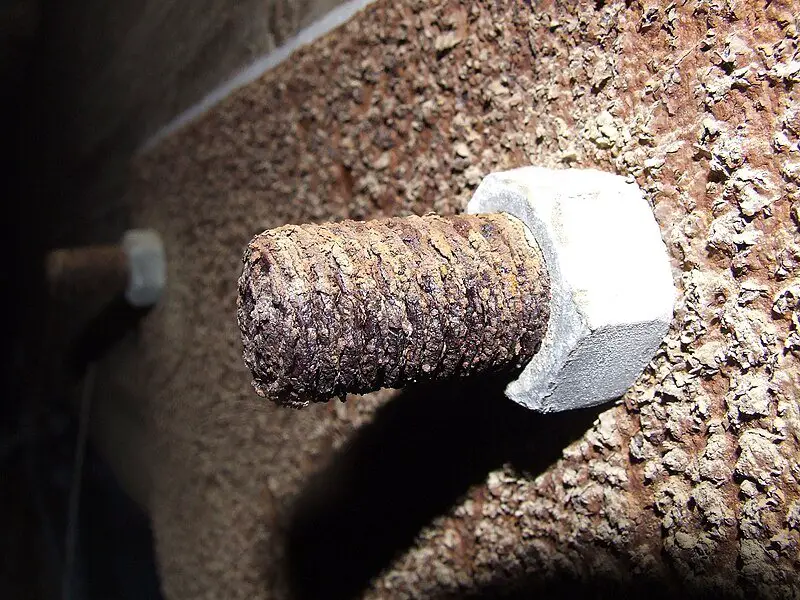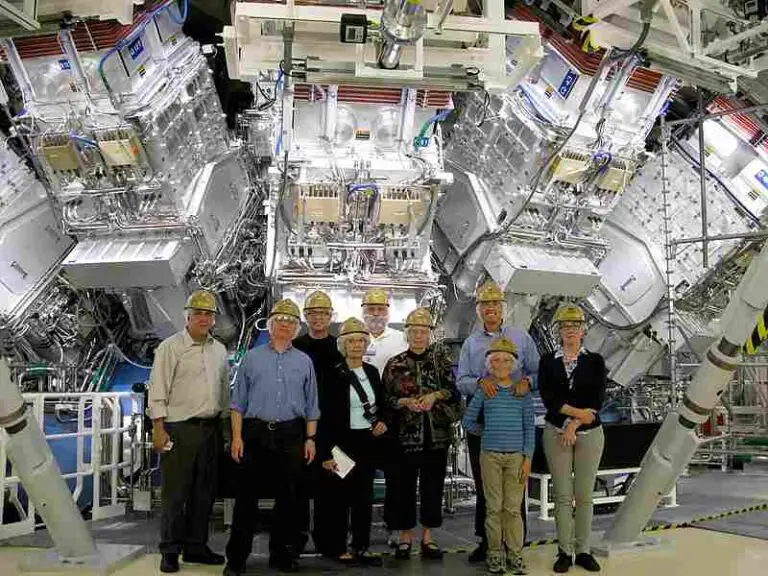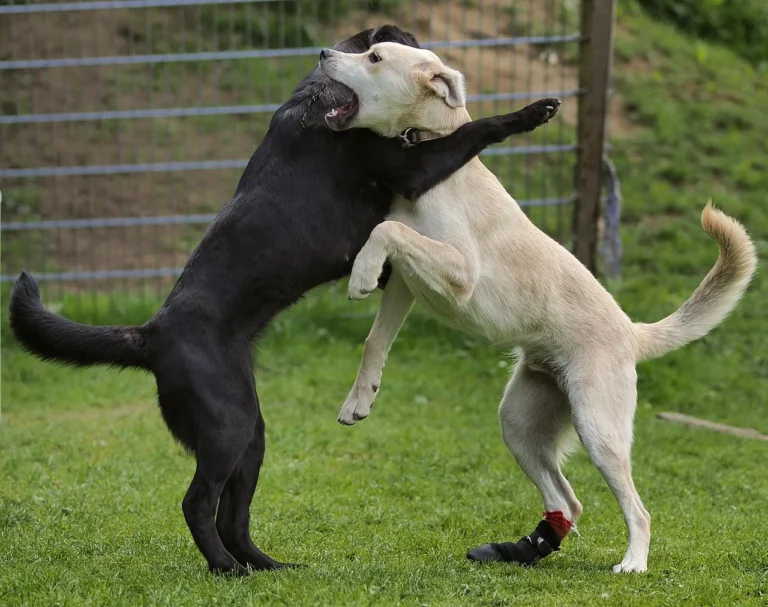Corrosion Definition, Chemistry, Types, Factors, Causes/Prevention
Corrosion of metals is the outcome of a series of reactions between metals and ambient media like humid air and electrolyte, where the metals are transformed to oxides and hydroxides. This article discusses corrosion definition, chemistry, types, factors, causes and prevention, as outlined below;
-Corrosion Definition: 4 Ways to Define Corrosion
-Causes and Prevention of Corrosion
Corrosion Definition: 4 Ways to Define Corrosion
Corrosion is a chemical process whereby a metallic material deteriorates as a result of (often) spontaneous reactions that cause changes to its composition [3].
The above definition of corrosion is a most basic one, which highlights some essential attributes of the process such as its chemical nature.
More detail on the chemical reaction(s) involved in corrosion can further aid in its understanding. Below is an alternative corrosion definition that briefly highlights the chemistry of corrosion;
Corrosion is the reaction of metals with air gases and vapors, water, or electrolytic chemicals, leading to oxidation and physicochemical change that is observed as disintegration of the metals involved [4].
Another important aspect of the topic that can help in its understanding is the types of corrosion. These are distinguished by their chemical and physical attributes, and may differ in their degrading effect on the metal.
The alternative corrosion definition below lists some types of corrosion as its central theme;
Corrosion is the deterioration of metallic materials as they come in contact with reactive media like air and water. It can be distinguished into various types including; localized, uniform, galvanic, fretting, intergranular, pitting, crevice, cavitation, erosion-corrosion, stress corrosion cracking (SCC), and selective corrosions, respectively.
Factors used to distinguish the various types of corrosion from each other are; reactants involved, condition(s) of corrosion, scale and physical characteristics of corrosion, among others.
Lastly, the corrosion definition is outlined based on a comparison between corrosion and rusting; an with the goal of distinguishing the two concepts/processes from each other;
Corrosion is a concept that describes reactive degradation in most solid-state metals, and includes rusting of iron and its alloys to form metallic oxides and hydroxides [1].
As indicated above, the difference between corrosion and rusting is that the former is a broad concept covering reactive deterioration of most solid-state metals; while the latter is a form of corrosion and involves mostly iron and its alloys. Further discussion on the comparison between these concepts can be found in the article on corrosion and rusting.

Chemistry of Corrosion
The chemistry behind corrosion comprises of oxidation and hydration reactions, which usually occur collaboratively in a series of reactions.
Reactants involved in corrosion are mostly metals, air gases, air moisture, and electrolytic fluids. These may occur simultaneously or independently, depending on specific conditions.
Ultimately, the metal loses its original chemical makeup, becoming transformed to oxide and hydroxide compounds.
For iron, the final product of corrosion is hydrated iron oxide, whose chemical formula is; Fe2O3 .xH20.
Below is a summary of the chemical mechanism of corrosion, including chemical formulas of steps in the corrosion process;
1). Solid-State Oxidation (in explanation of the Chemistry of Corrosion)
Solid-state oxidation of metals occurs as the first step in the process of corrosion.
It involves the loss of electrons from elemental metals, causing them to become ionized and oxidized. Often, this is a result of reaction with water, which may come into contact with the metal from humid air.
In this case, iron is used as the corroding metal, to illustrate the chemistry of corrosion. Below is the solid-state oxidation equation for iron;
Fe(s) → Fe2+(aq) + 2e- ...(1)
After initial oxidation, the electrons lost by iron react with hydrogen ions and oxygen from humid air, to produce water, thereby increasing humidity in the narrow zone above the metal surface;
4e- + 4H+(aq) + O2(aq) → 2H2O(l) ...(2)
2). Metal Hydration
Metal hydration is the second important stage in the chemical mechanism of corrosion. It is also the first stage involving actual chemical transformation of the metal.
The metal becomes hydrated as a result of increased local humidity, as well as an abundance of hydroxyl (OH-) ions that occur as hydrogen ions in water molecules react with lost electrons from iron (that is; electrons released in the first stage).
In an iron hydration reaction, iron (II) ions (Fe2+) produced from oxidation react with hydroxyl ions, as shown in the equation below;
Fe2+(aq) + 2OH-(aq) → Fe(OH)2(s) ...(3)
Hydrated iron is observed as green deteriorated metallic material on the surface of the corroding iron or iron-alloy in the early stage of corrosion.
3). Deterioration (in explanation of the Chemistry of Corrosion)
The final stage of corrosion involves the formation of a reddish deposit (what is known as rust) on the metal due to a composite ionic reaction involving all charged groups (iron, hydrogen, oxygen) formed in the entire process. This is shown in the following equation;
4Fe2+(aq) + 4H+(aq) + O2(aq) → 4Fe3+(aq) + 2H2O(l) ...(4)
On further reaction with hydroxyl ions, iron (III) oxide formed in the equation above, is transformed to the hydrous form of rust;
Fe3+(aq) + 3OH-(aq) → Fe(OH)3 ...(5)
On dehydration, Fe(OH)3 yields corroded iron or rust, Fe2O3.H2O;
2Fe(OH)3 → Fe2O3.H2O + 2H2O ...(6)
Types of Corrosion
Types of corrosion are;
1. Localized Corrosion
2. Uniform Corrosion
3. Galvanic Corrosion
4. Fretting Corrosion
5. Intergranular Corrosion
6. Pitting Corrosion
7. Crevice Corrosion
8. Cavitation Corrosion
9. Erosion-Corrosion
10. Stress Corrosion Cracking (SCC)
11. Selective Corrosion
Factors Affecting Corrosion
Factors affecting corrosion are;
1. Temperature
2. Metal Composition (presence or absence of impurities)
3. Humidity
4. pH
5. Conductivity
6. Electrochemical Potential of Metal
7. Salinity
8. Surface Areas of Cathode and Anode
An understanding of these factors and their relationship with metallic chemical transformation gives insight into the conditions that cause corrosion.
Causes and Prevention of Corrosion
Potential causes of corrosion are;
1. High Humidity
2. Mechanical Stress
3. Acidic Gases
4. Abundance of Air and Oxygen
5. Biotic Activity (such as algal growth which may facilitate degradation of underwater marine structures like offshore foundations. It should be noted that algae can also inhibit underwater corrosion of metal structures [2])
6. High Salinity
7. Uncoated and Irregular Metal Surfaces (including occurrence of crevices)
8. High Conductivity and Electrochemical Potential
Measures for the prevention of corrosion are;
1. Effective Material Selection
2. Localized-Humidity Reduction
3. Protective Coating with Non-Corrosive Metals like Aluminum (also called Galvanization)
4. Use of Drying Agents
5. Greasing and Oiling
6. Alloying
7. Appropriate Storage (non-humid, moderate-temperature conditions)

Conclusion
Corrosion is an oxidation process whereby metals react with oxygen and hydrogen ions to form oxides and hydroxides that cause the metals to disintegrate.
The chemistry of corrosion comprises of oxidation and hydration reactions, in a step-by-step chemical corrosion mechanism outlined as follows;
1. Solid-State Oxidation
2. Metal Hydration
3. Deterioration
Chemical equations of corrosion are;
Fe(s) → Fe2+(aq) + 2e- ...(1)
4e- + 4H+(aq) + O2(aq) → 2H2O(l) ...(2)
Fe2+(aq) + 2OH-(aq) → Fe(OH)2(s) ...(3)
4Fe2+(aq) + 4H+(aq) + O2(aq) → 4Fe3+(aq) + 2H2O(l) ...(4)
Fe3+(aq) + 3OH-(aq) → Fe(OH)3 ...(5)
2Fe(OH)3 → Fe2O3.H2O + 2H2O ...(6)
Types of corrosion are; localized, uniform, galvanic, fretting, intergranular, pitting, crevice, cavitation, erosion-corrosion, stress corrosion cracking (SCC), and selective corrosions, respectively.
Factors affecting corrosion are; temperature, metal composition, humidity, pH, conductivity, electrochemical potential, salinity, and electrode surface area.
Potential Causes of corrosion are; high humidity, mechanical stress, acidic gases, abundance if air and oxygen, biotic activity, high salinity, uncoated and irregular metal surfaces, high conductivity and electrochemical potential.
Measures for the prevention of corrosion are; material selection, humidity reduction, galvanization, use of drying agents, greasing and oiling, alloying, and appropriate storage.
References
1). Harsmiran, S.; Kumar, S.; Rakesh, K. (2021). "OVERVIEW OF CORROSION AND ITS CONTROL: A CRITICAL REVIEW." Proceedings on Engineering Sciences 3(1):13-24. Available at: https://doi.org/10.24874/PES03.01.002. (Accessed 12 May 2023).
2). Ismail, N.; Mujad, S. M.; Fakhratul, M.; Zulkifli, M. F. R.; Izionworu, V. I.; Ghazali, M. J.; Norsani, W. M.; Nik, W. S. W. (2022). "A review on application of marine algae as green corrosion inhibitors in acid medium." Vietnam Journal of Chemistry. Available at: https://doi.org/10.1002/vjch.202200001. (Accessed 12 May 2023).
3). Rani, B. E. A.; Basu, B. J. (2012). "Green Inhibitors for Corrosion Protection of Metals and Alloys: An Overview." International Journal of Corrosion 2012(1687-9325). Available at: https://doi.org/10.1155/2012/380217. (Accessed 12 May 2023).
4). Yepez, O. J. (2018). "On the Mechanism of High Temperature Corrosion." Available at: https://www.researchgate.net/publication/329488067_On_the_Mechanism_of_High_Temperature_Corrosion. (Accessed 12 May 2023).



